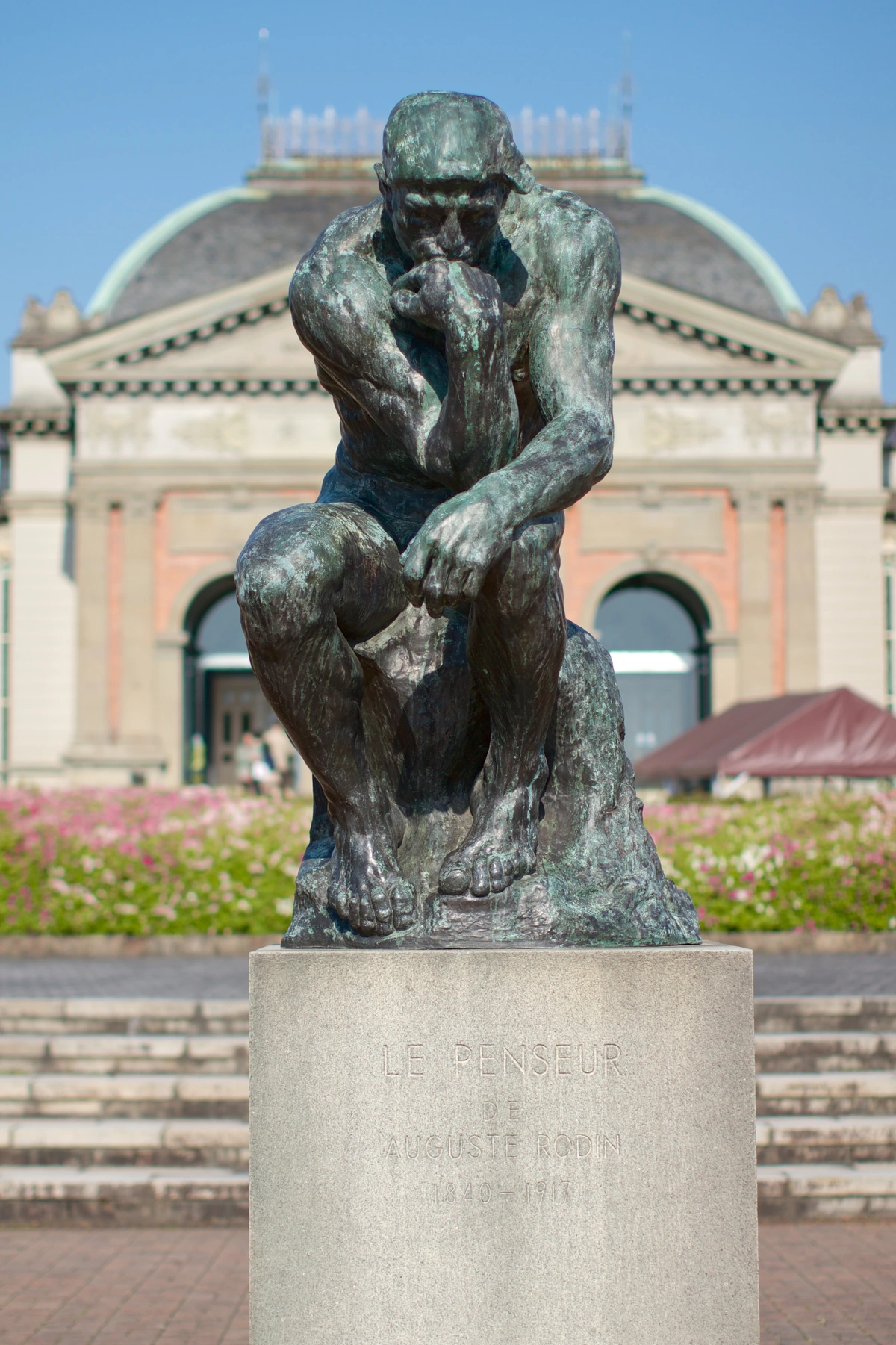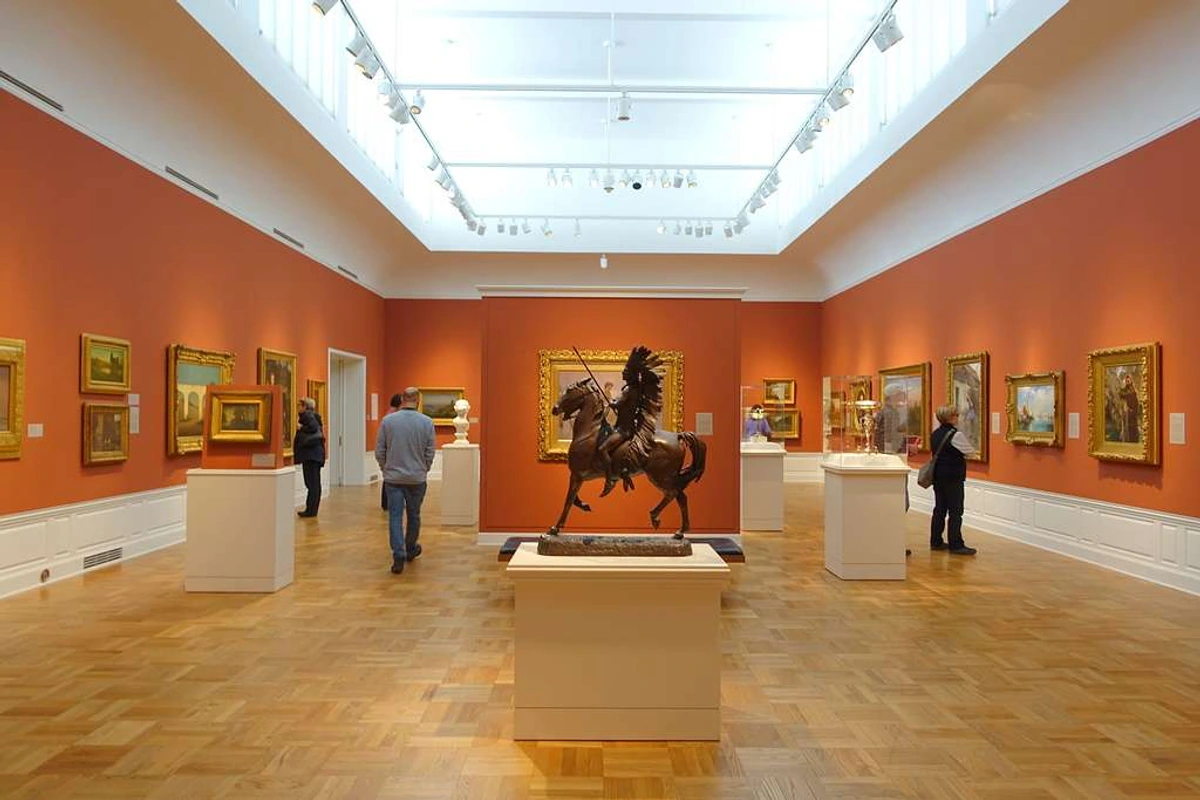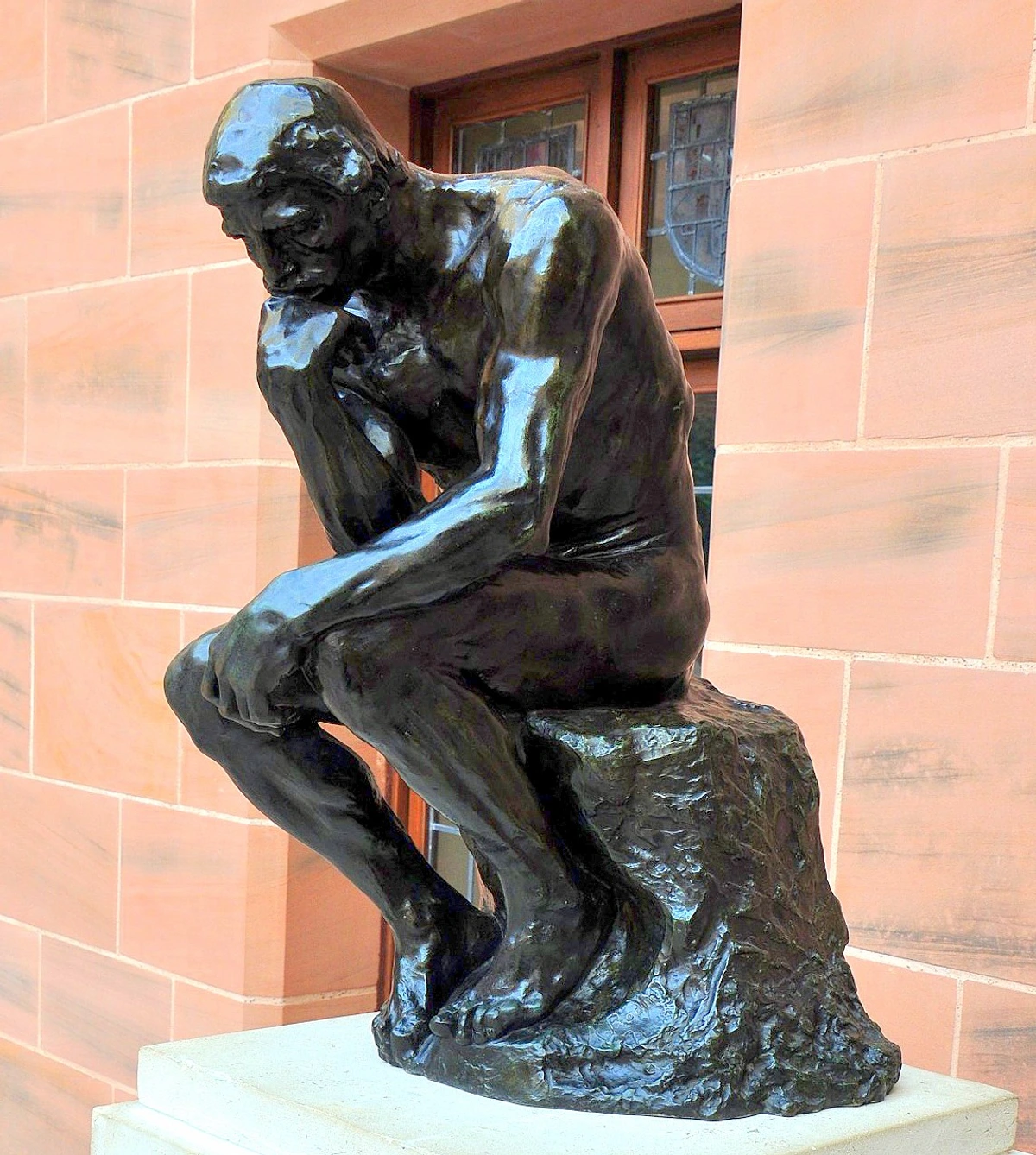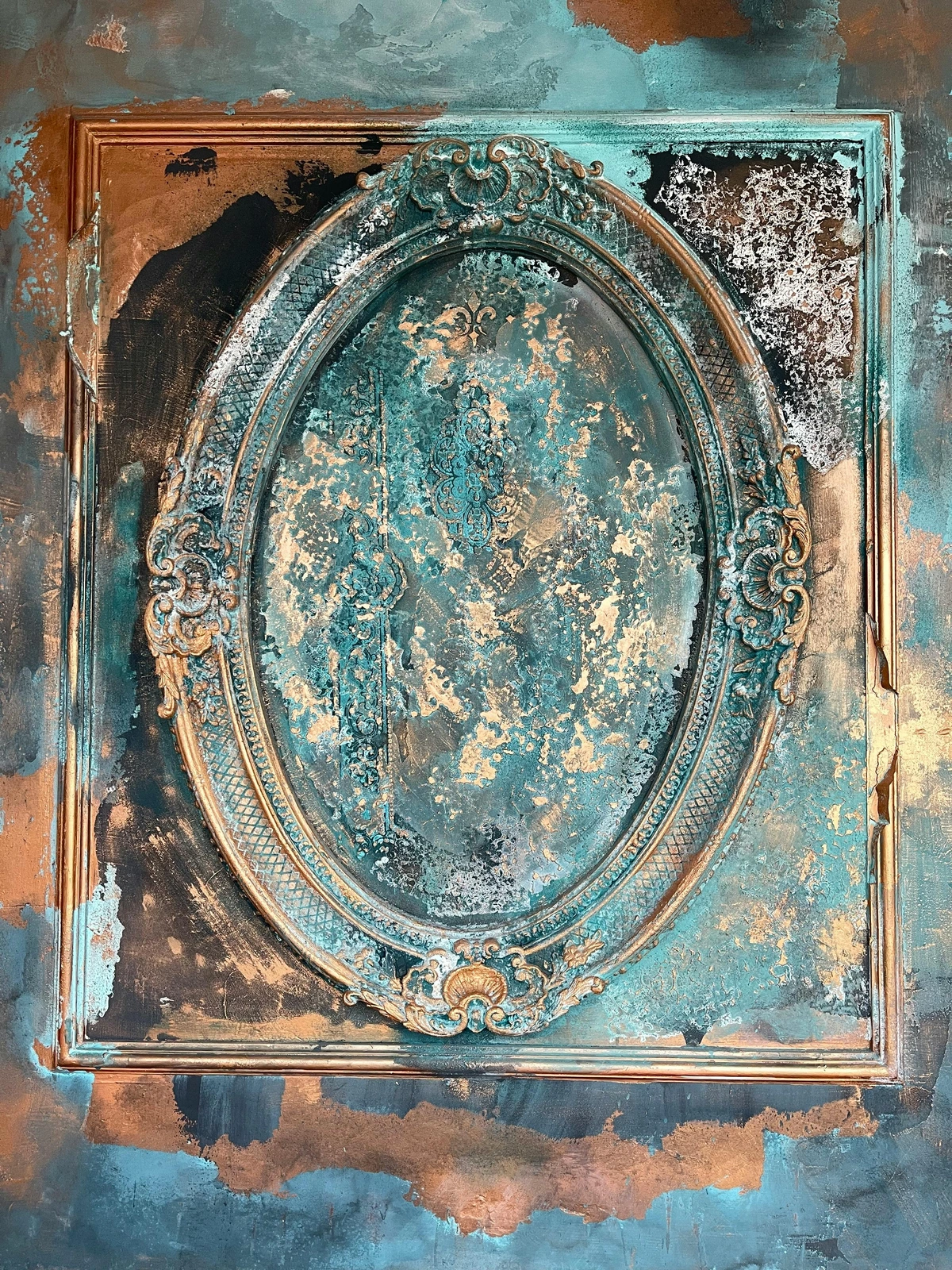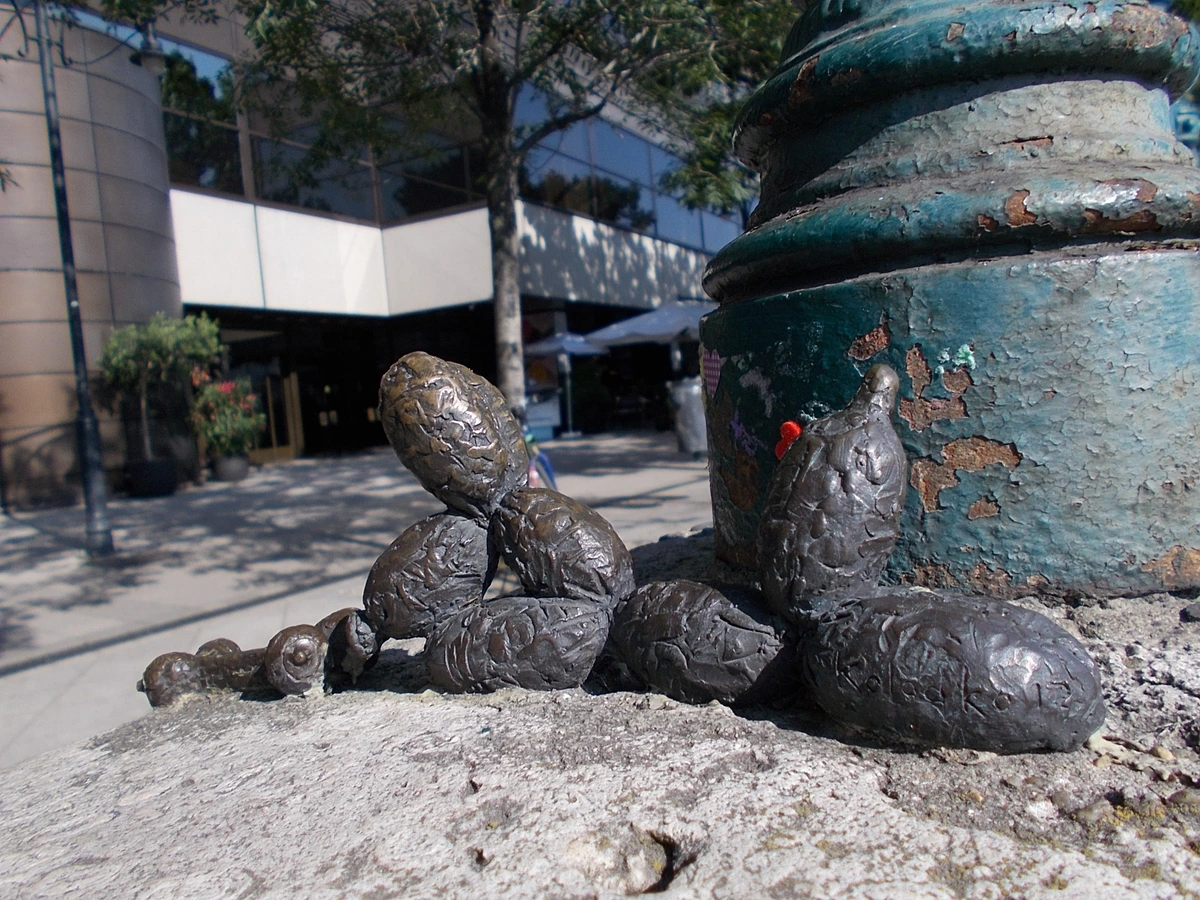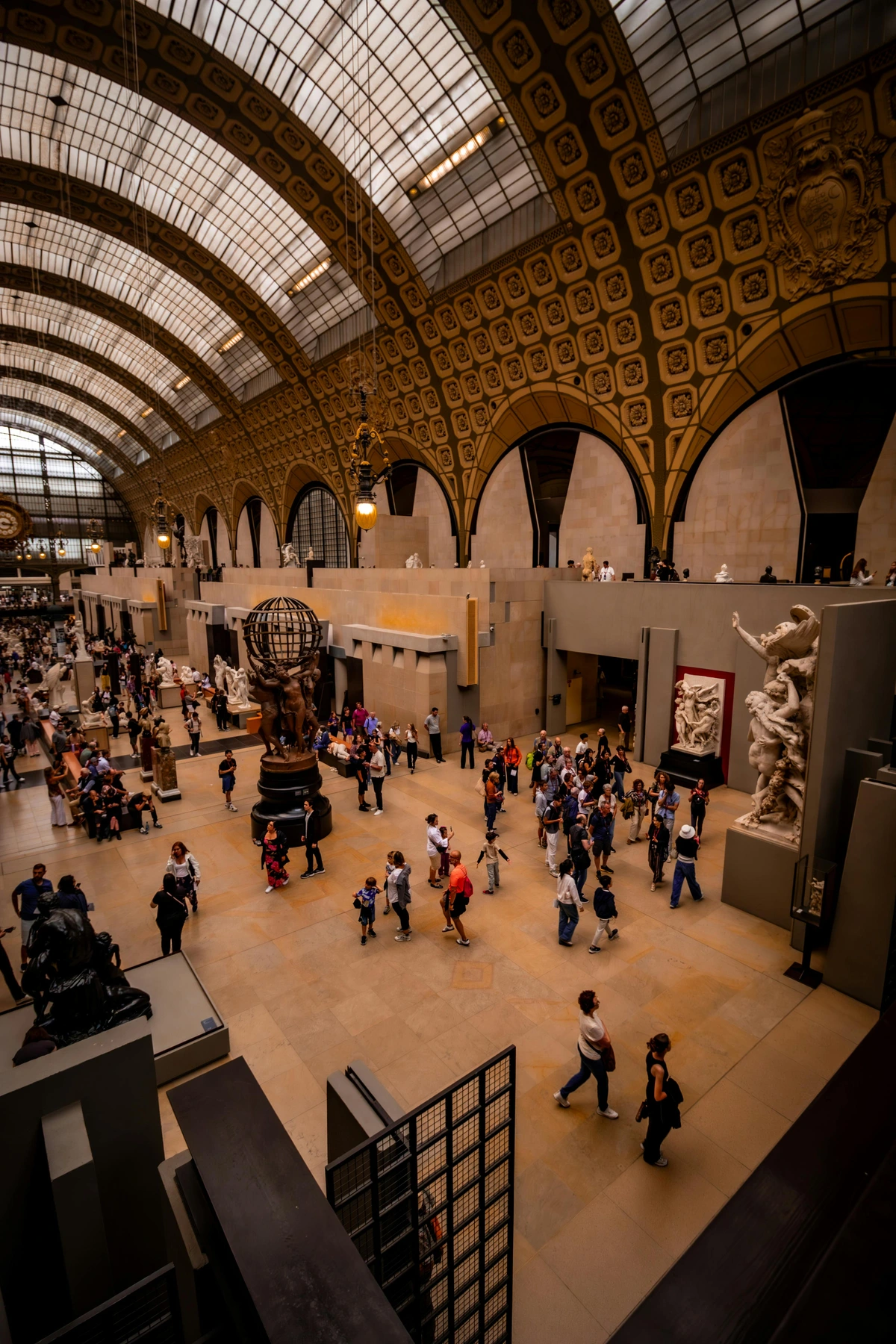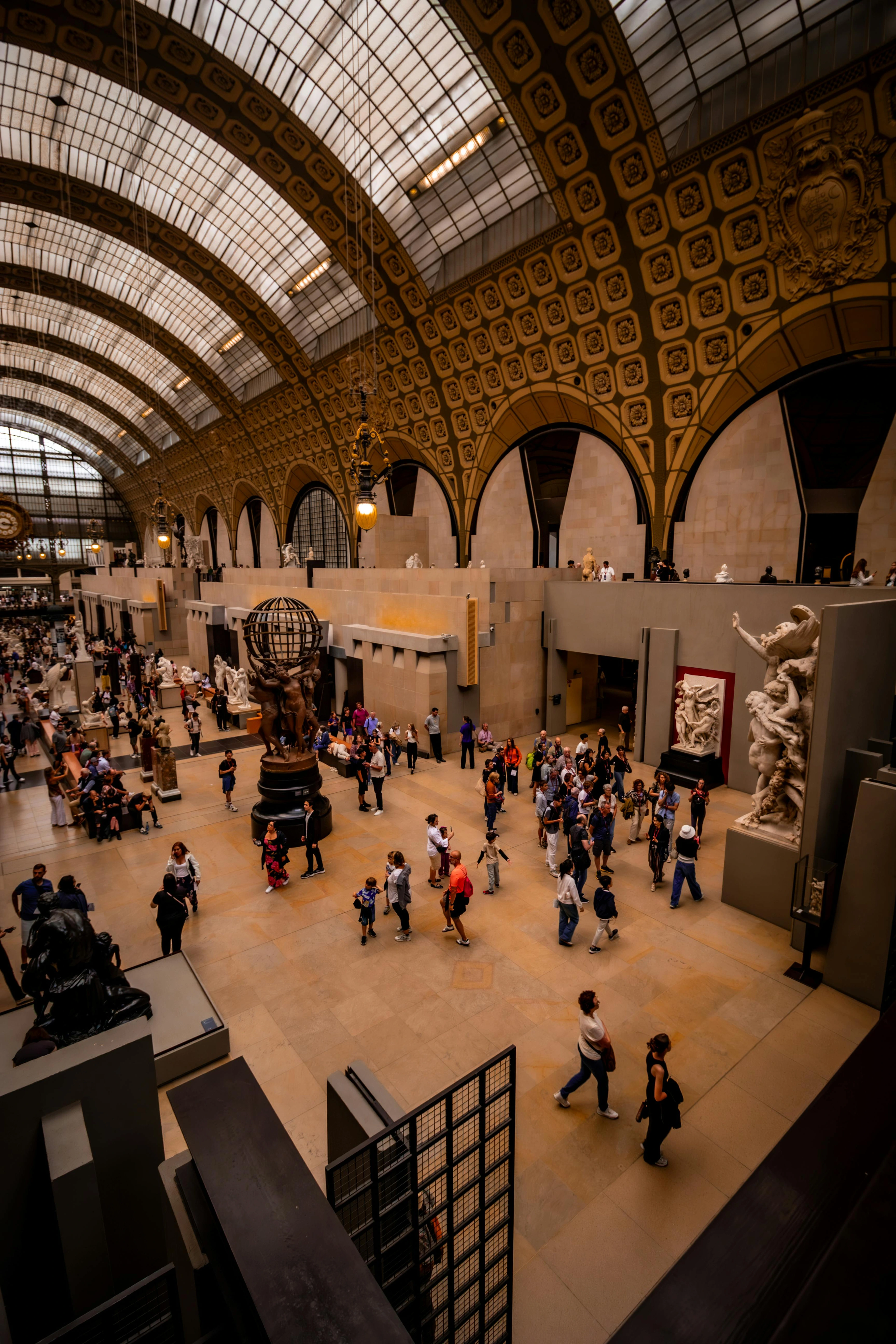
How to Care for Bronze Sculptures: A Personal Guide to Preserving Your Masterpieces
Unlock the secrets to preserving your bronze sculptures. This comprehensive, personal guide demystifies bronze care, from understanding patina to hands-on cleaning and protection techniques, ensuring your art endures.
The Enduring Legacy of Bronze: A Curator's Guide to Sculpture Care
Hello there. I'm genuinely excited you've found your way here, because there's something profoundly captivating about bronze that, even after decades, I simply can't get enough of. It carries the weight of history, echoing tales of ancient civilizations, grand artistic movements, and deeply personal passions. For me, it's more than just a metal; it's a silent storyteller, a testament to enduring craftsmanship and the relentless march of time. This guide, I hope, will become your definitive resource – a comprehensive journey into the world of bronze sculpture care, drawing from my own decades of curatorial experience, a few hard-learned lessons (oh, the stories I could tell!), and a deep, abiding love for these magnificent objects. This isn't just about cleaning or polishing; it's about mindful custodianship, about understanding the very essence of these metallic masterpieces – how they age, how they react to the world, and most importantly, how we can ensure their stories resonate for centuries to come. It's a journey, a continuous dialogue with an inanimate object that somehow feels profoundly alive. And trust me, it's far more rewarding than you might initially imagine.
For many, a bronze sculpture is more than just an acquisition; it's an investment, a piece of heritage, a source of daily inspiration. And just like any valuable treasure, it demands respectful, informed stewardship. My own path, marked by diligent study and, yes, a few early missteps (we all learn, don't we?), has forged a deep appreciation for the nuances of bronze care. It’s less about a rigid checklist and more about cultivating a mindful approach, an intuition that comes from understanding the material itself. It's almost like learning to speak its language, understanding its subtle cues, and responding with respect.
For many, a bronze sculpture is more than just an acquisition; it's an investment, a piece of heritage, a source of daily inspiration. And just like any valuable treasure, it demands respectful, informed stewardship. My own path, marked by diligent diligent study and, yes, a few early missteps (we all learn, don't we?), has forged a deep appreciation for the nuances of bronze care. It’s less about a rigid checklist and more about cultivating a mindful approach, an intuition that comes from understanding the material itself. It's almost like learning to speak its language, understanding its subtle cues, and responding with respect.
This isn't merely a cleaning guide; it's an invitation to become a true custodian, to engage in the art of preservation. So, let's unlock the secrets to keeping your bronze masterpieces not just beautiful, but perpetually vibrant.
Understanding Your Bronze: More Than Just Metal
Before we even think about a cloth or a brush, I think it's crucial to understand what we're actually working with. Bronze, a magnificent alloy primarily of copper and tin (and sometimes other metals like zinc or manganese), is incredibly durable – it's why so many ancient artifacts still exist and captivate us thousands of years later! But its true magic, for me, lies in its ability to age gracefully, developing that distinctive surface layer we call patina.
A Brief History of Bronze: From Utility to Artistry
The story of bronze is truly ancient, dating back to around 3500 BCE, marking the dawn of the "Bronze Age." This revolutionary alloy, significantly harder and more durable than pure copper, transformed human civilization. Early applications were primarily utilitarian: tools, weapons, and armor. But it wasn't long before artisans recognized its incredible potential for artistic expression. From the intricate statues of ancient Greece and Rome to the monumental works of the Renaissance and beyond, bronze became the material of choice for depicting gods, heroes, and human endeavor. Its ability to capture fine detail, its inherent strength, and its capacity to develop a rich, protective patina made it ideal for both monumental public art and delicate private pieces. Understanding this deep historical lineage helps us appreciate not just the object, but the millennia of human ingenuity and artistic passion poured into its creation. To truly appreciate a sculpture, one must also grasp the fundamental elements of sculpture itself, understanding how form, line, and space contribute to its enduring power.
Bronze Alloys and Casting Techniques: A Comprehensive Overview
Bronze isn't a single material; it's a vast family of alloys, typically copper-based, with varying additions that profoundly influence its properties, appearance, and how it interacts with the environment. The classic bronze used in ancient times, often referred to as 'tin bronze,' was primarily copper and tin, renowned for its exceptional strength, remarkable corrosion resistance, and its beautiful casting qualities that allowed for intricate detail.
As metallurgy evolved, so did the bronze family. Modern bronzes might incorporate a range of other metals to achieve specific characteristics:
- Phosphor Bronze: Contains phosphorus, increasing strength and wear resistance. Often used in gears and bearings, but also in some contemporary sculptures for its durability.
- Aluminum Bronze: Features aluminum, offering even greater strength and corrosion resistance, especially in marine environments. It can also produce a distinctive golden sheen.
- Manganese Bronze: Includes manganese, enhancing strength and hardness, and can contribute to unique patina developments.
- Silicon Bronze: A modern favorite for artists due to its excellent fluidity during casting and good weldability. It produces a very smooth surface and is highly resistant to corrosion.
Each of these alloys reacts slightly differently to atmospheric conditions, leading to a unique development of patina over time. For a deeper dive into the vast world of materials, consider exploring our definitive guide to sculpture materials-techniques-history.
Understanding the casting process is also key to appreciating a bronze sculpture's inherent characteristics and potential vulnerabilities. The most common and revered method, especially for artistic works, is the lost-wax casting (cire perdue) technique. This intricate, multi-step process involves:
- Creating a Model: The artist sculpts the original form, typically in clay.
- Making a Mold: A flexible mold is made from the original model.
- Wax Positive: Molten wax is poured into the mold to create a wax replica (the 'positive'). This wax model is often refined and detailed by the artist.
- Spruing & Venting: Wax rods (sprues and vents) are added to the wax model to create channels for the molten bronze to flow in and gases to escape.
- Ceramic Shell: The entire assembly is repeatedly dipped into a ceramic slurry and coated with refractory material, creating a robust ceramic shell around it.
- De-waxing: The entire assembly is heated in a kiln, melting out the wax (hence 'lost-wax'), leaving a hollow ceramic mold.
- Pouring: Molten bronze, heated to around 2,000°F (1,093°C), is poured into the ceramic shell.
- Breakout & Finishing: Once cooled, the ceramic shell is carefully broken away, revealing the rough bronze casting. Sprues and vents are cut off, and the surface is chased (ground, filed, and polished) to remove imperfections and refine details.
- Patination: Finally, the desired patina is applied (if artificial) and often sealed with wax.
This technique allows for incredible detail and fidelity to the artist's original vision, but it also means that each bronze is a unique creation, carrying the subtle marks of its making. These casting nuances can also influence how a sculpture ages and how certain areas might respond to cleaning or environmental factors. It's truly a fascinating journey from raw metal to enduring art, a testament to both chemistry and craftsmanship.
Another common technique, especially for larger or less detailed works, is sand casting. This method uses compacted sand molds formed around a pattern. While generally less precise than lost-wax casting, it's often more economical and faster for certain applications. The method of casting, whether lost-wax or sand, can also subtly affect the surface texture and how patina adheres or develops, further emphasizing why understanding your specific piece is so important.
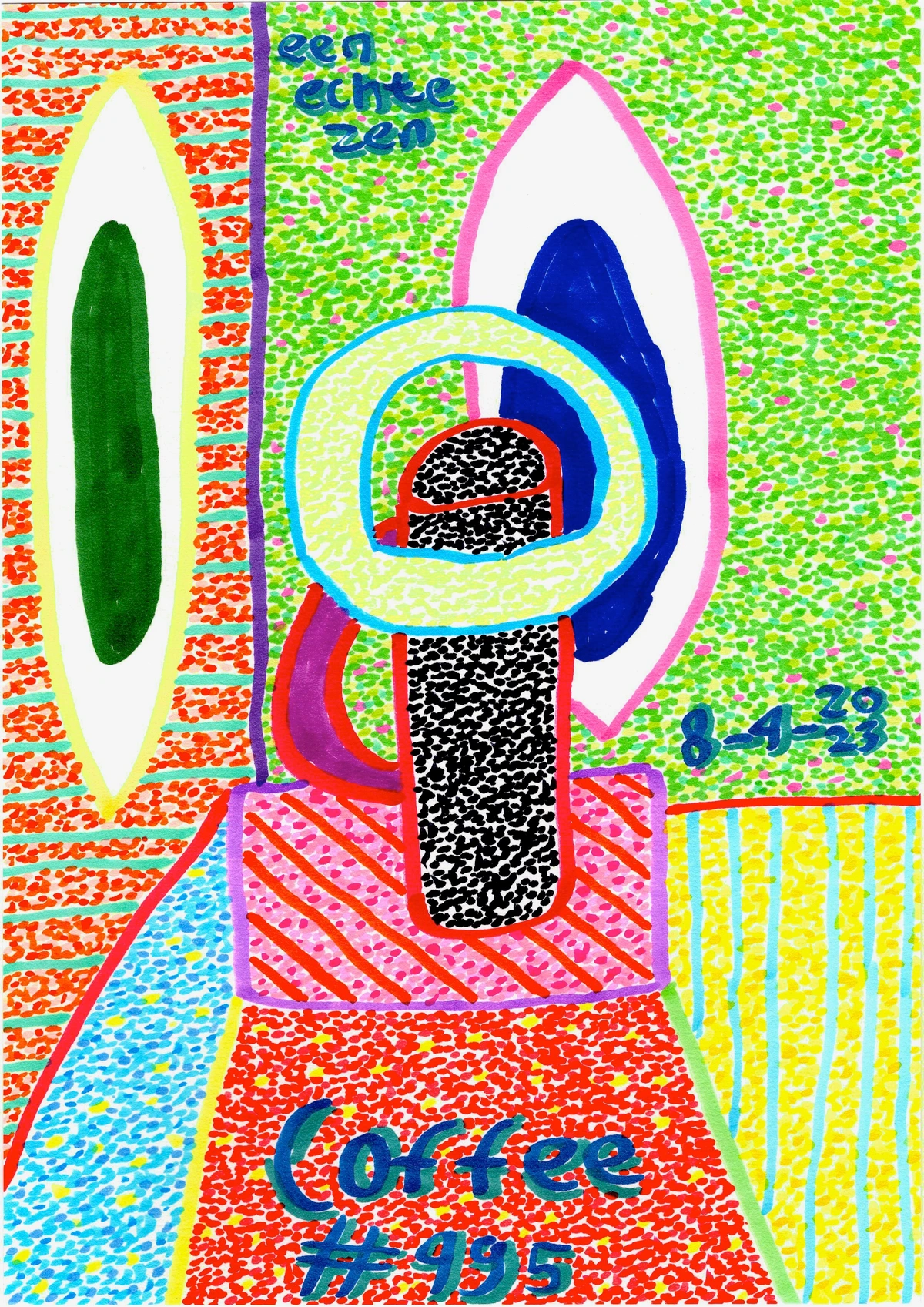
The Soul of Bronze: Patina
To truly care for bronze, we must first bow to its most defining characteristic: the patina. Many newcomers, myself included once upon a time, mistake it for mere dirt, tarnish, or even a flaw. But no, patina is the very soul of a bronze sculpture, its unique fingerprint of age, history, and profound interaction with the environment. It's that stable, often exquisitely beautiful, surface layer that forms through a gradual and complex process of oxidation and chemical reactions, primarily involving copper carbonates, sulfides, and oxides. These intricate chemical transformations are what give each piece its unique character, its depth, and its undeniable visual poetry.
Think of it as nature's own protective cloak, a testament to time and exposure. A rich, stable patina isn't just valued by collectors and art historians; it's often an integral part of the artist's original vision, guiding the viewer's eye and enhancing the sculpture's narrative. From the deep, earthy browns and blacks seen on many classical pieces to the vibrant greens and blues (often referred to as verdigris, though that's a more specific term we'll touch on later) found on outdoor works, each hue tells a complex story of the sculpture's journey and environment. It's a living surface, constantly evolving, and a critical component of the sculpture's artistic and historical integrity.
Think of it as nature's own protective cloak, a testament to time and exposure. A rich, stable patina isn't just valued by collectors and art historians; it's often an integral part of the artist's original vision, guiding the viewer's eye and enhancing the sculpture's narrative. From the deep, earthy browns and blacks seen on many classical pieces to the vibrant greens and blues (often referred to as verdigris, though that's a more specific term we'll touch on later) found on outdoor works, each hue tells a complex story of the sculpture's journey and environment.

Natural vs. Artificial Patinas: Understanding Their Origins
There are two main categories of patina, each telling its own fascinating story and requiring a slightly different appreciative eye:
Feature | Natural Patina | Artificial (Applied) Patina |
|---|---|---|
| Formation | Slow, gradual development over decades/centuries | Deliberately applied by artists/foundries/conservators |
| Process | Spontaneous interaction with oxygen, moisture, pollutants, and time. | Achieved through precise application of heat and specific chemicals to the bronze surface. |
| Hues | Earthy browns, rich blacks, verdant greens, subtle blues, and reddish-browns (e.g., malachite, azurite). | Wide spectrum: vibrant reds (ferric nitrate), deep dark browns/blacks (liver of sulfur), various greens (ammonium chloride, cupric nitrate) – tailored to artist's vision. |
| Appearance | Often varied, beautifully uneven, organic, a true "fingerprint of age" and environment. | Can be more uniform, controlled, immediate in its aesthetic impact, part of the initial artistic statement. |
| Protection | Nature's own protective cloak, forming a stable barrier over time against deeper corrosion. | Often sealed immediately after application for stability and protection; designed to endure. |
| Value/Intent | Testament to time and exposure, historical integrity, a chronicle of the sculpture's journey. | Integral to the artist's original vision from the moment of completion, an aesthetic choice. |
Both natural and artificial patinas are equally vital to preserve. Each represents a unique aspect of the sculpture's identity – either the hand of time gracefully marking its passage, or the deliberate, artistic intent woven into its very surface. The key is understanding which you have, and respecting its origin.
The Ominous Exception: Bronze Disease
While most patinas are a mark of beauty and age, there's a destructive impostor known as bronze disease. This isn't a desirable patina at all, but rather an active, highly corrosive process, typically characterized by powdery, pale green spots. It's primarily caused by the presence of chloride ions (often from salts, pollutants, or improper cleaning) and moisture, which leads to the formation of cupric chloride, eating away at the bronze itself. If you suspect bronze disease, it requires immediate professional intervention, as it can spread rapidly and cause irreversible damage. The tell-tale signs are usually powdery, bright pale green spots, sometimes fuzzy, and they often recur even after gentle cleaning attempts. It's not a stable, hard layer like a desirable green patina; it's active and destructive, like a cancer eating away at the metal. I always say, a good conservator is your best friend if you see this particular green, and don't delay – time is truly of the essence when dealing with this insidious threat.
Preventing Bronze Disease: Proactive measures are your absolute best defense against this insidious threat. This includes:
- Humidity Control: Maintaining stable humidity levels (ideally below 50% relative humidity) is paramount, especially indoors. Rapid fluctuations can also trigger issues.
- Salt Avoidance: Preventing contact with chloride ions from salts (e.g., coastal air, road salts, certain aggressive cleaning agents, or even human sweat) is critical.
- Thorough Rinsing: After any cleaning, ensuring a meticulous and thorough rinse with distilled water is non-negotiable to remove all residues.
- Regular Waxing: Applying and regularly reapplying a museum-grade wax creates a crucial barrier against moisture and airborne pollutants, acting as a sacrificial layer.
- Archival Storage: For pieces not on display, proper storage in archival-quality materials (acid-free, inert) and a controlled environment plays a crucial role.
- Air Filtration: Especially in urban or industrial areas, indoor air purifiers can reduce airborne pollutants that contribute to corrosion.
For further insights into the nuanced distinction between beneficial verdigris and destructive bronze disease, you might find what is patina in art a clarifying read.
Honestly, when I first started out, I thought a shiny sculpture was a clean sculpture. Boy, was I wrong! Over-polishing or aggressive cleaning, using harsh abrasives, or even certain chemicals can strip away this precious layer, diminishing the sculpture's character, its historical integrity, and yes, even its market value. Protecting a stable, desirable patina is perhaps the most important lesson in bronze care. It’s about careful preservation, not aggressive restoration to some imagined "new" state, which I’ve sadly seen attempted far too often. Stripping away a patina is like erasing chapters from a book – you lose the rich narrative of its existence, its interaction with time and environment, and often, a significant portion of its artistic and market value. It's a wound that's almost impossible to truly heal.
If you're curious to dive deeper into this fascinating topic – and trust me, it’s a game-changer for understanding your bronze – I highly recommend exploring what is patina in art.
The Environment and Your Bronze: Silent Sculptors
Before we grab our cleaning cloths, it's essential to recognize that your bronze sculpture isn't just passively sitting there; it's actively interacting with its environment. The air it breathes, the light it absorbs, the moisture it encounters, and even the subtle tremors of its surroundings are all silent sculptors, subtly (or sometimes not so subtly) shaping its surface. Understanding these environmental influences is foundational to effective, long-term preservation. Ignoring them is like trying to sail a ship without knowing about the currents – you might make it, but it’ll be a bumpy, unpredictable ride. To make this a bit clearer, I've put together a table summarizing the main environmental culprits and their impact.
Environmental Factors and Their Impact on Bronze
Environmental Factor | Key Impact on Bronze Sculpture |
|---|---|
| Light (UV & Visible) | Degradation of protective waxes, uneven heating, potential micro-cracking of patina. |
| Humidity & Temperature | Rapid fluctuations cause condensation, trapping pollutants, accelerating corrosion, freeze-thaw damage. |
| Air Quality & Pollutants | Acid rain (sulfur dioxide, nitrogen oxides), particulate matter (soot, dust) cause corrosive acids. |
| Biological Growth | Moss, lichen, algae trap moisture, produce organic acids, bird droppings are highly corrosive. |
| Vibration | Structural stress, potential for micro-fractures, loosening of components over time. |
Why it Matters for Care |
|---|
| Leads to vulnerable patina, requires controlled lighting and regular re-waxing. |
| Stable environment crucial; avoid direct heat/cold sources; monitor humidity. |
| Regular cleaning to remove deposits; air filtration indoors; proactive waxing outdoors. |
| Requires gentle, timely removal; keep vegetation clear; immediate removal of droppings. |
| Secure display, avoid high-traffic or unstable locations. |
Light: The Invisible Sculptor
Light, particularly ultraviolet (UV) radiation and intense visible light, can be surprisingly damaging to bronze over time. While bronze itself isn't prone to fading like some pigments (though some artificial patinas can be light-sensitive!), UV light can significantly degrade protective wax coatings. This degradation breaks down the wax polymers, reducing its ability to repel water and shield the patina, effectively making the sculpture's surface more vulnerable to other environmental factors like moisture and pollutants. Intense heat from direct sunlight can also cause uneven expansion and contraction of the metal, potentially leading to micro-cracking in the patina or structural stress over long periods. Think of it like constant sun exposure on your own skin – it wears down the protective layers.
- Indoor: This is generally easier to control. Always avoid direct, unfiltered sunlight. Position sculptures away from windows where harsh, direct light can fall for prolonged periods. Use indirect natural light or controlled artificial lighting. LEDs are ideal as they emit minimal UV radiation and very little heat, making them a conservator's friend and a perfect choice for illuminating your treasured pieces without risk.
- Outdoor: While outdoor bronzes are designed for sun exposure, it's wise to consider partial shade if available, especially for pieces with delicate or intentionally nuanced patinas. The sun's relentless rays will degrade protective waxes more quickly outdoors. Regular re-waxing is therefore absolutely crucial to replenish these UV-degraded protective layers, acting like a constant reapplication of sunscreen for your sculpture.
Humidity & Temperature: The Unseen Dance
The interplay of humidity and temperature is perhaps the most critical environmental factor for bronze stability. Rapid and extreme fluctuations, especially, are far more damaging than stable high or low levels. The real villain here is condensation. Imagine warm, moist air suddenly cooling upon contact with a cooler bronze surface. This forms tiny water droplets, which can then trap airborne pollutants like sulfur dioxide or chloride ions. This trapped, acidic moisture then sits directly on the patina, initiating or accelerating corrosive reactions, including the dreaded bronze disease. For outdoor pieces, freezing and thawing cycles can cause significant physical stress and micro-damage, particularly if water has penetrated fine cracks. It's a silent, often invisible dance that can slowly but surely undermine your sculpture's integrity.
- Indoor: The goal here is stability. Aim for a consistent room temperature (around 68-72°F or 20-22°C) and moderate relative humidity (40-55%). Crucially, keep sculptures away from direct drafts, HVAC vents, radiators, fireplaces, or poorly insulated exterior walls where temperatures and humidity might swing wildly. I always recommend a good quality table-top hygrometer – they're not just for cigar humidors, you know! You might even consider a small, dedicated humidifier or dehumidifier to maintain these ideal conditions if your local climate is particularly challenging, or if your home experiences wide seasonal shifts.
- Outdoor: While you can't control the weather, understanding local climate patterns helps immensely. Ensure good drainage around the sculpture's base to prevent water pooling, which can accelerate corrosion. Prioritize frequent protective waxing in areas with high humidity, heavy rainfall, or regions experiencing severe freeze-thaw cycles. In areas with truly severe winters, some extremely valuable or delicate outdoor bronzes are even temporarily covered or brought indoors to prevent extreme thermal shock and prolonged exposure to ice.
Air Quality & Pollutants: The Silent Assault
The air around us, especially in urban or industrial areas, is often laden with invisible threats that wage a silent war on bronze. Sulfur dioxide, nitrogen oxides (key components of acid rain), and various particulate matters (like soot, industrial dust, and even pollen) can settle on bronze surfaces. When these mix with moisture, they create highly corrosive acids that actively eat away at the patina. Even seemingly safe indoor environments can harbor pollutants from cooking fumes (grease, volatile organic compounds), strong cleaning products (ammonia, chlorine bleach), fireplaces (soot, acidic gases), or even off-gassing from new furniture and carpets. These seemingly innocuous sources can, over time, deposit corrosive agents onto your bronze, slowly eroding its protective layers and accelerating degradation. I've often seen beautiful indoor pieces suffer significantly from a nearby busy kitchen or an unvented gas heater, showing just how pervasive these threats can be.
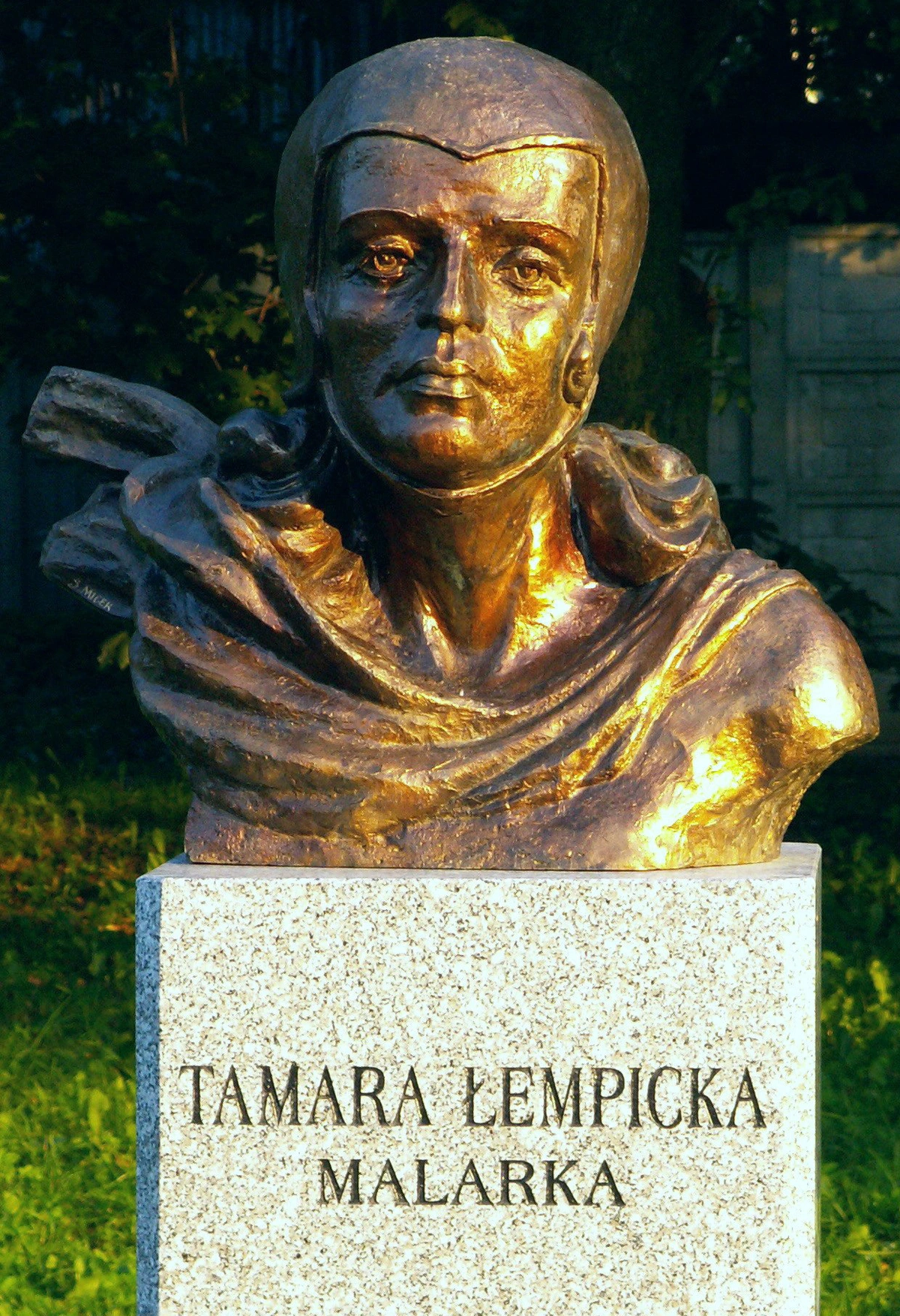
- Indoor: Maintaining good indoor air quality is vital. Consider high-quality air purifiers with both HEPA and activated carbon filters, particularly in dusty or polluted areas, or in homes with active fireplaces. Crucially, avoid placing sculptures near sources of strong chemical fumes, heavy foot traffic (which can stir up dust), or even fresh paint and new textiles, all of which can off-gas corrosive compounds.
- Outdoor: Regular and diligent cleaning is paramount to remove accumulated pollutants before they can react significantly with the patina. In severely affected regions (e.g., highly industrial or urban areas), consider specialized barrier coatings specifically designed to resist acid rain and industrial fallout, though these should always be applied by a professional conservator.
Biological Growth: Nature's Embrace (Sometimes Too Tight)
For outdoor sculptures, biological growth like moss, lichen, algae, and even fungi can become a significant issue. These organisms not only trap moisture against the bronze surface but can also produce organic acids that etch and damage the patina. Bird droppings, rich in uric acid, are also highly corrosive and require immediate, careful removal.
- Outdoor: Keep surrounding vegetation trimmed to prevent direct contact. Regularly inspect for and gently remove any biological growth. For light moss or algae, a very soft-bristle brush (like a natural hair paintbrush) and distilled water can often suffice. More stubborn growth may require careful, gentle scrubbing with a wooden or plastic spatula, again with distilled water, but never a metal tool. The key is to dislodge the growth without abrading the patina. For persistent problems, specialized biodetergent solutions, only recommended and applied by a professional conservator, might be necessary. Immediate removal of bird droppings is non-negotiable – their uric acid content is highly corrosive and can etch into the patina in a matter of hours if left unchecked. A damp cotton swab can be used to gently soften and lift them. Consider installing deterrents like bird spikes or netting in discreet areas if droppings are a chronic problem, always ensuring they don't damage the sculpture.
Vibration: The Subtle Stressor
This might seem like a minor point, but vibration, over time, can exert subtle yet significant stress on a bronze sculpture. Constant, low-level vibrations (from heavy traffic, nearby construction, or even lively household activity) can lead to:
- Structural Fatigue: Micro-fractures can develop in the metal, especially at points of stress concentration (e.g., thin limbs, joints, or attachment points to a base).
- Patina Damage: The constant movement can cause the patina to crack, flake, or become dislodged, compromising its protective and aesthetic qualities.
- Component Loosening: For sculptures assembled from multiple parts or those with internal armatures, vibration can gradually loosen connections.
- Indoor: Ensure display pedestals are stable and heavy enough to absorb vibrations. Avoid placing sculptures directly on floors in high-traffic areas or near sources of significant vibration (e.g., washing machines, sound systems with powerful bass). Consider vibration-dampening materials (e.g., felt pads, rubber isolators) beneath the base.
- Outdoor: While harder to mitigate entirely, choose stable ground for installation. If near heavy traffic or construction, professional assessment of potential impact might be warranted.
Environmental Recommendations at a Glance:
Factor | Indoor Environment | Outdoor Environment |
|---|---|---|
| Light | Indirect natural, controlled LED (minimal UV/heat) | Partial shade if possible, regular re-waxing is key |
| Humidity & Temperature | Stable 40-55% RH, 68-72°F (20-22°C), avoid fluctuations | Good drainage, frequent waxing in harsh climates |
| Air Quality | Air purifiers, avoid chemical fumes/heavy traffic | Regular cleaning to remove pollutants |
| Biological Growth | Minimal concern | Trim vegetation, regular inspection & gentle removal, immediate bird dropping removal |
Understanding these environmental factors isn't about creating an hermetically sealed chamber (unless you're a major museum, which, let's be honest, most of us aren't). It's about mindful placement, proactive maintenance, and recognizing when the environment is actively challenging your sculpture's integrity. My personal philosophy? It's about being a benevolent steward, providing the best possible conditions, and intervening gently and thoughtfully when needed, always with the sculpture's long-term health and historical voice in mind.

The Essentials of Bronze Sculpture Care: My Practical Approach
Alright, let's transition from understanding what bronze is and how it interacts with its world, to the nitty-gritty of hands-on care. This section is where my years of experience coalesce into practical, actionable advice. Think of this as your foundational guide to ensuring your bronze sculptures not only survive but thrive under your guardianship. It’s a synthesis of preventative measures, regular maintenance, and knowing when to call in the cavalry. I always approach this with a mindset of gentle diligence – small, consistent efforts yield the best long-term results, far more than sporadic, aggressive interventions.
Beyond Maintenance: Handling, Display, and Security
The true art of custodianship extends beyond cleaning and protection. It encompasses how we interact with, present, and safeguard these remarkable objects. From the moment you move a bronze to its final resting place, a thoughtful approach ensures its longevity and presentation. It’s about creating a harmonious relationship between the sculpture and its environment. And crucially, it's about knowing your sculpture inside and out – having a complete record of its life and health.
Documenting Your Masterpiece: The Paper Trail of Preservation & Valuation
This might sound like bureaucratic work, but trust me, thorough documentation is one of the most powerful tools in a custodian's arsenal. It provides a historical record, aids in future conservation efforts, and is indispensable for insurance, appraisal, and even potential sale purposes. Think of it as your sculpture's health record, autobiography, and financial dossier combined.
- High-Resolution Photography: Before, during, and after any significant cleaning, waxing, or treatment, take clear, well-lit photographs from multiple angles. Document any existing damage, unique features, or the condition of the patina. These serve as a visual baseline and are invaluable for insurance claims or conservation assessments. Consider digital backups and cloud storage for these images.
- Condition Reports: Maintain a written log detailing the sculpture's condition, dates of cleaning/waxing, observations about the environment, and any changes noted. Even small notes can be incredibly valuable over time. Include detailed descriptions of any anomalies.
- Provenance: Keep a meticulous record of the sculpture's ownership history (provenance). This is vital for authenticity and value, significantly impacting market desirability.
- Purchase Records & Appraisals: Store all receipts, certificates of authenticity, and up-to-date appraisal documents securely. Periodically obtain professional appraisals from qualified art valuers; art markets fluctuate, so regular updates are wise for accurate market value and insurance purposes.
- Conservation Treatment Records: If a professional conservator works on your piece, ensure you receive and retain a detailed report of their methods, materials used, and photographic documentation. These records are critical for maintaining the sculpture's history and value.
The Gentle Touch: Safe Handling Practices
Even the most robust bronze sculpture demands careful handling. I’ve seen too many avoidable accidents from improper lifting. Always wear archival cotton gloves when handling your bronze; the natural oils and acids from our skin, though seemingly benign, can leave marks and accelerate corrosion over time. This isn't just a fussy museum rule; it's a practical measure to protect the patina from invisible threats. For a deeper understanding of preserving your collection, our guide on art storage solutions for collectors offers valuable insights that extend to handling.
Pre-Handling Checklist
Before you even think about touching or moving your bronze, take a moment. A few seconds of preparation can save you a lifetime of regret.
Checklist Item | Purpose |
|---|---|
| Wear Gloves | Prevent transfer of skin oils, acids, and dirt. |
| Clear the Path | Avoid trips, falls, and collisions. |
| Assess Weight & Balance | Understand the sculpture's center of gravity. |
| Plan the Lift & Placement | Minimize awkward movements and re-adjustments. |
| Enlist Help (if needed) | Distribute weight, provide stability, prevent drops. |
| Protect Surfaces | Prevent scratches or damage during transfer. |
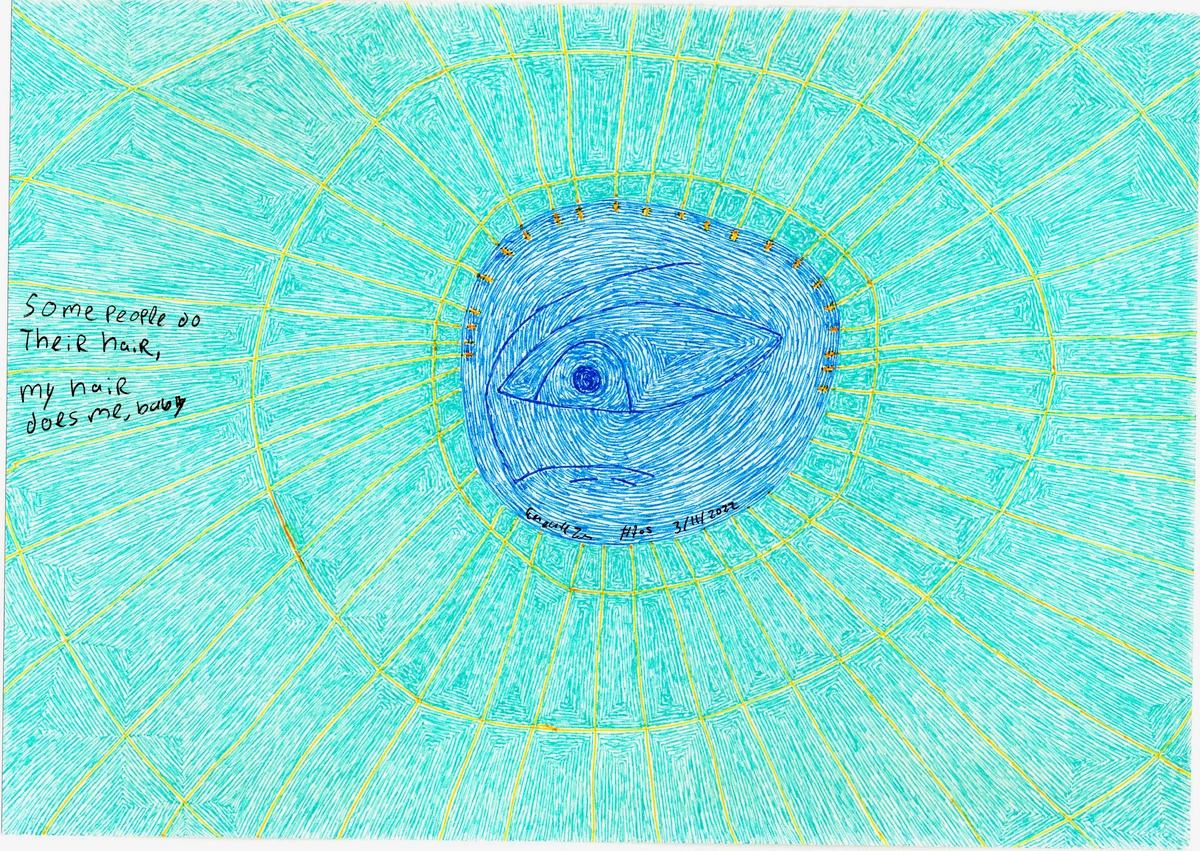
Action |
|---|
| Always use clean, archival cotton gloves. |
| Ensure your route is free of obstacles, rugs, pets, or people. |
| Gently test its stability; identify heaviest parts for lifting. |
| Decide exactly where you'll lift from and where it will be placed. |
| For heavier or awkward pieces, always have a second pair of hands. |
| Lay down padding or soft cloths on destination surfaces. |
Key Handling Rules:
- Lift from the Base: Whenever possible, lift the sculpture by its most stable, thickest part – usually the base or the main structural body. This distributes the weight evenly and reduces stress on delicate points.
The Gentle Touch: Safe Handling Practices
Even the most robust bronze sculpture demands careful handling. I’ve seen too many avoidable accidents from improper lifting. Always wear archival cotton gloves when handling your bronze; the natural oils and acids from our skin, though seemingly benign, can leave marks and accelerate corrosion over time.
Key Handling Rules:
- Lift from the Base: Whenever possible, lift the sculpture by its most stable, thickest part – usually the base or the main structural body.
- Avoid Extremities: Never lift or carry a sculpture by its delicate protruding elements (e.g., outstretched arms, thin limbs, decorative flourishes). These are often the weakest points and prone to breakage.
- Two Hands or More: For larger pieces, always enlist help. A second pair of hands provides both support and balance.
- Clear the Path: Before moving, ensure your path is clear of obstacles. A stumble is often fatal for bronze.
Curating Your Space: Optimal Display Environments
Where you choose to display your bronze has a profound impact on its long-term health and visual appeal. It’s not just about aesthetics; it’s about creating a safe haven that respects the sculpture's needs. For more detailed insights into showcasing your collection, our article on how to incorporate sculptural art into modern interiors offers fantastic ideas that can inspire.
Indoor Considerations: Creating a Sanctuary
- Stability is Key: Above all, ensure the pedestal or surface is perfectly stable and capable of comfortably bearing the sculpture's full weight. Earthquakes, energetic pets, or clumsy guests are all very real threats. For heavier pieces, consider museum-quality display cases or professionally anchored pedestals. Using conservation-grade materials for pedestals (e.g., inert wood sealed with archival coatings, sealed metal) is also a good practice to prevent off-gassing that could adversely affect the bronze over time.
- Light Control: Reiterate: avoid direct, unfiltered sunlight. Prolonged exposure can cause uneven heating, degrade wax coatings, and potentially alter some more sensitive patinas. Indirect, diffused natural light or carefully positioned artificial lighting (LEDs are truly ideal as they emit minimal UV and very little heat) is the gold standard for indoor display.
- Humidity & Temperature Stability: Strive for stable room temperature and moderate humidity (around 40-55% RH). Rapid fluctuations are detrimental, encouraging condensation and corrosion. Keep pieces well away from HVAC vents, radiators, fireplaces, or exterior walls where temperatures and humidity might swing wildly. A small hygrometer near your sculpture can be a very wise investment for continuous monitoring.
- Dust Accumulation: Consider locations where dust can be minimized, or where regular, gentle cleaning is easy to perform without risk. Air purifiers can help in dusty environments.
- Air Circulation: Ensure there's adequate air circulation around the piece to prevent localized humidity build-up, but avoid strong, direct drafts.
Outdoor Considerations: Embracing the Elements Wisely
- Drainage: Crucial for outdoor pieces. Ensure the sculpture’s base and immediate surroundings allow for proper water drainage. Standing water, even for short periods, can accelerate corrosion, foster biological growth, and potentially contribute to freeze-thaw damage.
- Sun Exposure: While outdoor bronzes are built to endure, excessive, relentless UV exposure can still degrade protective waxes more rapidly and impact patina stability over decades. Consider planting or structural elements that offer partial shade if possible, especially for pieces with delicate or intentionally nuanced patinas, or ensure very regular waxing.
- Flora & Fauna Management: Keep surrounding vegetation trimmed and away from direct contact with the sculpture, as plant growth can trap moisture, produce organic acids, and even physically abrade the surface. And as much as I love our feathered friends, bird droppings are highly corrosive and need immediate, gentle attention to prevent etching.
- Visual Integration: Always think about how the sculpture interacts with its surroundings. A thoughtfully chosen backdrop, whether natural or architectural, can significantly enhance its presence and visual impact, turning it into a true focal point. For more expansive ideas on presentation, displaying sculptures indoors beyond pedestal offers fascinating perspectives, many of which translate to outdoor considerations with a little creative thinking.
Securing Your Masterpiece: Preventing Theft and Damage
Sadly, the beauty and value of bronze sculptures, especially those displayed outdoors, make them targets for theft or vandalism. Proactive security measures are a regrettable but necessary part of responsible ownership. For comprehensive advice on protecting your valuable collection, our guide understanding art insurance is an essential read.
Security Strategies: Layering Your Protection
- Permanent Installation: For larger or outdoor pieces, I strongly recommend having them permanently anchored to their pedestal or foundation by a professional. This often involves embedding steel rods deep into the ground or base, making removal extremely difficult without specialized, heavy equipment and significant time, which deters most opportunistic thieves.
- Strategic Lighting: Well-placed, motion-activated lighting can be an excellent deterrent for opportunistic thieves, making the sculpture visible at night and signaling attention. It also, of course, enhances the sculpture's aesthetic appeal after dark.
- Visibility & Landscaping: While sometimes counter-intuitive, ensuring good visibility from your home or a busy street can act as a powerful deterrent. Conversely, regularly assess surrounding landscaping – keep bushes trimmed and avoid dense plantings that could inadvertently provide cover for illicit activities.
- CCTV & Alarms: For high-value pieces, consider integrating them into your home's comprehensive security system. High-resolution cameras, motion sensors, and even proximity alarms can provide crucial monitoring and alerts. Modern smart home systems offer seamless integration and remote monitoring capabilities, giving you peace of mind wherever you are.
- Discreet Marking & Registration: Discreetly marking your sculpture with an indelible identifying number (e.g., using microdot technology, UV marking, or engraving in a truly inconspicuous spot) can significantly aid in recovery if stolen. It's also wise to register your piece with reputable art loss databases; this creates a searchable record.
- Community Engagement: For public or easily accessible outdoor installations, engage with local community groups or neighborhood watch programs. Collective vigilance can be a powerful deterrent.
- Professional Monitoring: For significant collections, consider dedicated art security services that offer specialized monitoring and response.
- Insurance (Again!): This isn't a prevention measure, but it is an absolutely crucial backstop. Ensure your sculpture is properly insured against theft, damage, and loss, with a policy that specifically covers fine art and its unique risks. I know, it's not the romantic side of art ownership, but it's the practical, responsible reality that protects your investment. For more comprehensive advice, understanding art insurance is an essential read.
The Journey: Packaging and Transport
Moving a bronze sculpture, whether across a room or across continents, is a high-risk activity that demands meticulous planning and execution. Improper packaging and handling during transport are common causes of damage. I've heard too many heartbreaking stories of pieces arriving damaged because corners were cut. This is where you really need to channel your inner logistics expert.
Key Transport Considerations:
- Professional Packers: For valuable or delicate pieces, always use professional art handlers specializing in sculpture. They have the expertise, the right materials, and the insurance. This isn't a place to cut costs.
- Custom Crating: A custom-built wooden crate, designed specifically for your sculpture's dimensions and vulnerabilities, is often essential. It should be lined with archival, inert cushioning materials (e.g., polyethylene foam, Ethafoam) that provide shock absorption and prevent abrasion. Consider double crating for particularly fragile or high-value works.
- Internal Securing: The sculpture must be securely immobilized within the crate to prevent any movement. This often involves custom-carved, inert foam inserts (like polyethylene or Ethafoam, which won't off-gas) or sturdy wooden bracing. Never allow it to simply "float" in loose packing peanuts – these offer insufficient protection and can shift, leaving your sculpture vulnerable. Proper internal securing is paramount to absorb shocks and prevent abrasion.
- Temperature & Humidity Control (Climate Crating): For highly sensitive pieces, or during long-distance transport through extreme climates, climate-controlled crating with internal monitoring might be necessary to maintain stable environmental conditions.
- Documentation: Thoroughly document the condition of the sculpture with high-resolution photographs before and after packing. This is your undeniable proof in case of damage. Keep copies off-site.
- Insurance (Again!): Ensure your artwork is fully insured for transit, door-to-door, by a reputable art insurer. Policies for stationary display often don't cover transit risks, so always confirm this specific coverage. For more in-depth guidance on securing your collection, I highly recommend exploring resources on art storage solutions for collectors and understanding art insurance.
The Journey: Packaging and Transport
Moving a bronze sculpture, whether across a room or across continents, is a high-risk activity that demands meticulous planning and execution. Improper packaging and handling during transport are common causes of damage, and I've heard too many heartbreaking stories of pieces arriving irreversibly harmed because corners were cut. This is where you really need to channel your inner logistics expert and prioritize protection above all else.
Key Transport Considerations: Ensuring Safe Passage
- Professional Art Handlers: For valuable or delicate pieces, always, always use professional art handlers specializing in sculpture. They have the highly specific expertise, the right materials, and the necessary insurance coverage. This isn't a place to cut costs – the investment in professional transport can save you far more in potential damage and heartache.
- Custom Crating: A custom-built wooden crate, designed precisely for your sculpture's unique dimensions and vulnerabilities, is often essential. It should be constructed from robust, stable wood and lined with archival, inert cushioning materials (e.g., high-density polyethylene foam, Ethafoam) that provide superior shock absorption and prevent any abrasion to the surface. For particularly fragile or high-value works, consider double crating, where the primary crate is suspended within a larger outer crate, providing an additional layer of protection against impact.
- Internal Securing: The sculpture must be securely immobilized within its crate to prevent even the slightest movement during transit. This often involves custom-carved, inert foam inserts or sturdy wooden bracing specifically fitted to the sculpture's contours. Never allow a sculpture to simply "float" in loose packing peanuts or bubble wrap – these offer insufficient protection and can shift, leaving your sculpture vulnerable to impact damage. Proper internal securing is paramount to absorb shocks and prevent abrasion.
- Temperature & Humidity Control (Climate Crating): For highly sensitive pieces, or during long-distance transport through extreme climates, climate-controlled crating with internal monitoring might be necessary. This helps maintain stable environmental conditions within the crate, mitigating risks from temperature swings or humidity spikes.
- Thorough Documentation: Meticulously document the condition of the sculpture with high-resolution photographs from multiple angles before and after packing. This is your undeniable proof in case of transit damage. Keep digital backups and copies off-site.
- Comprehensive Transit Insurance: Ensure your artwork is fully insured for transit, door-to-door, by a reputable art insurer. Be aware that policies for stationary display often don't cover transit risks, so always confirm this specific coverage in detail. For more in-depth guidance on securing your collection, I highly recommend exploring resources on art storage solutions for collectors and understanding art insurance.
Documentation and Valuation: Protecting Your Investment
Beyond the physical care, the intellectual and financial aspects of bronze ownership are equally important. Maintaining thorough documentation and understanding the valuation of your pieces are crucial for long-term stewardship and protecting your investment.
- Comprehensive Records: Keep meticulous, detailed records of purchase, provenance (the complete ownership history), any previous owners, conservation treatments, and any notable exhibitions or publications. This information adds immense value and authenticity to your sculpture and is critical for both academic and market purposes.
- Professional Appraisals: Periodically obtain professional appraisals from qualified, accredited art valuers specializing in sculpture. This provides an accurate market value for insurance purposes, estate planning, or potential sale. Art markets fluctuate, so regular updates are wise to ensure your valuation is current.
- High-Resolution Photography: Document your sculpture with high-quality, professional-grade photographs from multiple angles, especially noting its condition, patina, and any unique details or identifying marks. This serves as invaluable evidence for insurance claims, conservation assessments, or provenance verification.
When Expertise is Essential: Professional Restoration
Despite our best efforts, sometimes things go wrong. Bronze can suffer from serious damage, or active corrosion might take hold despite diligent care. This is when the amateur caretaker must step aside and call in a professional. Recognizing when a problem exceeds your capabilities is a mark of true custodianship, not failure. Attempting to fix complex issues yourself can, and often does, lead to irreversible damage, drastically reducing the sculpture's value and integrity.
Recognizing When to Call a Conservator
Knowing when to seek professional help is paramount. Here are some red flags that typically warrant immediate consultation with a qualified bronze conservator:
- Active Bronze Disease (Verdigris): As discussed, this powdery green corrosion is progressive and highly destructive.
- Significant Patina Loss or Disruption: Large areas of patina flaking, blistering, or being completely stripped away. This is often the result of harsh cleaning or environmental factors.
- Structural Damage: Cracks, dents, broken components, or instability in the sculpture. These require specialized repair techniques.
- Extensive Biological Growth: Moss, lichen, or algae that has deeply penetrated the patina and resists gentle cleaning.
- Previous Botched Repairs: If a sculpture has been poorly "restored" or painted in the past, a conservator can often rectify the damage.
- Discoloration or Staining: Unusual dark spots, streaks, or an overall change in color that cannot be attributed to normal aging or dirt.
The Quest for Expertise: Choosing the Right Professional
Finding the right conservator is as important as the decision to call one. This isn't a task for a general handyman or a restorer of antique furniture. Bronze conservation is a highly specialized field.
Key Criteria for Selection: Due Diligence is Essential
Finding the right conservator is as important as the decision to call one. This isn't a task for a general handyman or a restorer of antique furniture; bronze conservation is a highly specialized scientific and artistic field.
- Credentials & Affiliation: Always look for conservators affiliated with recognized professional organizations such as the American Institute for Conservation (AIC), the International Institute for Conservation of Historic and Artistic Works (IIC), or similar national and international bodies. Membership in these organizations signifies adherence to strict ethical guidelines, professional standards, and ongoing education.
- Specialization: Critically, ensure they specialize in metal conservation, and ideally, have specific experience with bronze sculpture. A painting conservator, for instance, will not have the same expertise or equipment as a metal conservator. Don't be afraid to ask about their specific experience with bronze alloys and patinas similar to yours.
- Portfolio & References: Request to see examples of their past work on bronzes, particularly those that presented similar challenges to your piece. Ask for client references (museums, galleries, private collectors) and follow up on them.
- Detailed Proposal & Documentation: A good conservator will provide a comprehensive written proposal outlining their proposed treatment plan, the rationale behind it, the specific materials they intend to use, expected outcomes, and an estimated timeline and cost. They should also commit to thorough photographic and written documentation (condition reports, treatment reports) before, during, and after the work performed.
- Ethical Considerations & Reversibility: Discuss their approach to ethical conservation, particularly the principle of reversibility. This means that, wherever possible, treatments should be reversible without causing further damage to the artwork, preserving its original material and historical integrity.
- Cost vs. Value: Conservation can indeed be expensive, but it’s an essential investment in preserving the artwork’s integrity, historical significance, and financial value. Don't simply choose the cheapest option; prioritize the most qualified professional who demonstrates a deep understanding of your piece and adheres to the highest ethical standards. Remember, a poorly executed "bargain" repair can drastically diminish a sculpture's value and cause irreversible harm.
Common Pitfalls: What NOT to Do
In my journey with bronze, I’ve seen good intentions pave the way to irreparable damage. Sometimes, knowing what not to do is as important as knowing what to do. Consider this a curated list of my personal "don'ts" – lessons often learned the hard way, or witnessed in the unfortunate fates of others' treasured pieces.
- Harsh Abrasives & Chemicals: Never use steel wool, abrasive pads, wire brushes, sandblasting, highly acidic cleaners (like vinegar or lemon juice), or strong alkaline solutions. These will scratch the surface, strip the patina, and leave the bronze vulnerable to rapid corrosion. This is perhaps the biggest sin; once the patina is gone, it's very difficult and often impossible to truly replicate its natural formation.
- Over-Polishing to a Shine: Resist the urge to make your bronze "shiny" like new copper. This invariably means removing the patina, which is, as we’ve discussed, a crucial part of its character and value. A soft, natural sheen from careful waxing and buffing is ideal, not a factory-new gleam.
- Untested "Home Remedies": The internet is rife with DIY cleaning solutions involving anything from toothpaste to household ammonia or even abrasive pastes. Please, for the sake of your sculpture, avoid these like the plague. They are often unproven, irreversible, and potentially disastrous, frequently causing chemical staining or accelerating unwanted corrosion. Stick to methods recommended by professional conservators.
- Pressure Washing: While it might seem efficient for outdoor pieces, high-pressure water can physically erode the patina, drive moisture into crevices, and even damage the underlying metal. A gentle spray from a garden hose (mist setting) is the absolute maximum pressure I'd ever recommend.
- Neglecting Regular Maintenance: Sporadic, aggressive cleaning is far worse than consistent, gentle care. A little regular attention goes a long way in preventing serious issues from accumulating and requiring drastic intervention.
- Ignoring Active Corrosion: If you suspect bronze disease or any other form of active, spreading corrosion, do not procrastinate. It won't get better on its own, and every day it's left untreated, the damage deepens and becomes more challenging (and expensive) to rectify.
- Improper Handling: Dropping, dragging, or mishandling a heavy bronze can cause structural damage that is both costly and difficult to repair. Always handle with archival gloves and proper lifting technique, or better yet, enlist professionals for any significant moves.
Frequently Asked Questions About Bronze Care
I've had countless conversations with collectors, enthusiasts, and even fellow artists about their bronze sculptures. Certain questions come up again and again, like recurring themes in a grand symphony. So, I thought it would be helpful to address some of the most common queries right here, offering concise, authoritative answers based on my experience.
Common Bronze Care Mistakes and Solutions
Mistake | Why it's Harmful | Solution |
|---|---|---|
| Over-polishing/Aggressive Cleaning | Strips patina, reduces historical/artistic value, leaves raw metal vulnerable | Use only soft cloths/brushes, distilled water, pH-neutral soap; prioritize preservation |
| Using Harsh Chemicals (e.g., vinegar) | Highly acidic, etches patina, causes irreversible chemical staining | Stick to conservator-recommended pH-neutral cleaners and waxes |
| Ignoring Bronze Disease | Active corrosion spreads rapidly, causing irreversible damage | Immediate professional intervention from a qualified conservator |
| Improper Handling | Causes structural damage, dents, breakage | Always wear archival gloves, lift from base, enlist help for heavy pieces |
| Neglecting Regular Maintenance | Allows pollutants/corrosion to accumulate, requiring drastic measures | Consistent, gentle dusting and waxing is key |
| Inadequate Environmental Control | Leads to patina degradation, structural stress, accelerated corrosion | Monitor humidity/temperature, avoid direct sunlight, ensure good ventilation |

Q: Can I make my bronze sculpture shiny again? A: While it's tempting to restore a bronze to a factory-new shine, I strongly advise against it. That "shine" often means the removal of the natural patina, which diminishes the sculpture's artistic and historical value. The goal of care is preservation of the patina, not its obliteration. A gentle buff after waxing can achieve a beautiful, soft luster, which is very different from a polished, stripped surface.
Q: My bronze sculpture has a whitish-green film. What is it? A: This could be a few things. If it's a hard, stable, light green layer, it might be a natural mineral deposit or a stable copper carbonate patina, especially on outdoor pieces. However, if it's powdery, soft, or looks like it's growing, it could very well be active bronze disease (cupric chloride corrosion), which is destructive and requires immediate professional intervention. It could also be a residue from an improper cleaning agent or hard water. The safest approach is to consult a conservator for an accurate diagnosis.
Q: How often should I clean my outdoor bronze sculpture? A: For outdoor pieces, I recommend at least quarterly cleaning, but in heavily polluted areas, under trees, or in coastal environments, monthly or bi-monthly might be necessary. It largely depends on how quickly pollutants and organic matter accumulate. Regular visual inspection is your best guide.
Q: What are those green spots on my bronze? Is it bronze disease? A: Green spots can be either a desirable, stable copper carbonate patina (often called verdigris in common parlance) or, more ominously, active bronze disease. Bronze disease appears as powdery, often fuzzy, pale green spots that can spread and are destructive. If it's powdery and growing, it's disease and requires professional intervention. If it's a stable, hard, deep green, it's likely a natural patina. When in doubt, always consult a conservator.
Q: Is bronze waterproof? A: While bronze itself is quite resistant to water, it's not entirely waterproof in the sense of being impervious to change. Water, especially with dissolved pollutants, contributes to the formation and evolution of patina and can accelerate corrosion if allowed to pool or penetrate existing damage. Protective wax helps to repel water, but it's not an impenetrable shield forever.
Q: How long does a bronze sculpture last? A: With proper care, a bronze sculpture can last for thousands of years, as evidenced by ancient artifacts still with us today. Its longevity is a testament to its durability as an alloy. However, neglect or improper care can drastically shorten its lifespan and degrade its artistic integrity. Your role as a custodian is truly for the long haul.
Q: Can I use olive oil or lemon juice to clean my bronze? A: Absolutely not. These are common "home remedies" that are highly acidic and will damage the patina, potentially causing irreversible etching, staining, or accelerating unwanted corrosion. Stick to distilled water and pH-neutral soap, and for protection, museum-grade waxes.
Q: How does climate change affect outdoor bronze sculptures? A: This is a growing concern for conservators globally. Increased frequency and intensity of extreme weather events (heavy rain, strong winds, hail, heatwaves) can accelerate erosion, degrade protective coatings more rapidly, and introduce new pollutants. Rising temperatures and humidity can also exacerbate biological growth and chemical reactions. It means more vigilant monitoring and more frequent maintenance for outdoor pieces.
Q: What about chemical cleaning products designed for "metal"? A: Be extremely wary of generic "metal cleaners" or "bronze polishes" found in hardware stores. Many contain strong acids, abrasives, or chelating agents that will strip the desirable patina, leaving the bronze vulnerable and visually compromised. Always opt for pH-neutral, non-abrasive methods recommended specifically for art conservation. If a product doesn't explicitly state it's safe for bronze patinas and endorsed by conservation professionals, avoid it.

The Value of Your Bronze: Beyond Aesthetics
Caring for a bronze sculpture isn't just about preserving its physical form; it's about safeguarding its inherent value, which extends far beyond mere aesthetics. This value is multifaceted, encompassing artistic, historical, cultural, and monetary aspects. Understanding these layers of value can deepen your appreciation for your role as a custodian and reinforce the importance of meticulous care.
Artistic Significance: The Artist's Vision Embodied
Every bronze sculpture is a direct, tangible expression of an artist's vision, profound skill, and unique creative journey. From the initial concept in clay or wax to the intricate casting and the careful application of its final patina, it embodies a specific moment in art history and a unique facet of human creativity. Its artistic value is determined by a confluence of factors: the artist's renown and historical impact, the uniqueness and rarity of the specific piece (is it an edition, or unique?), its inherent aesthetic qualities (form, balance, expression), and its place within the artist's broader oeuvre or a particular art movement. Preserving the sculpture's original condition, especially its stable and intended patina, is absolutely paramount to maintaining this irreplaceable artistic integrity and the artist's original intent.
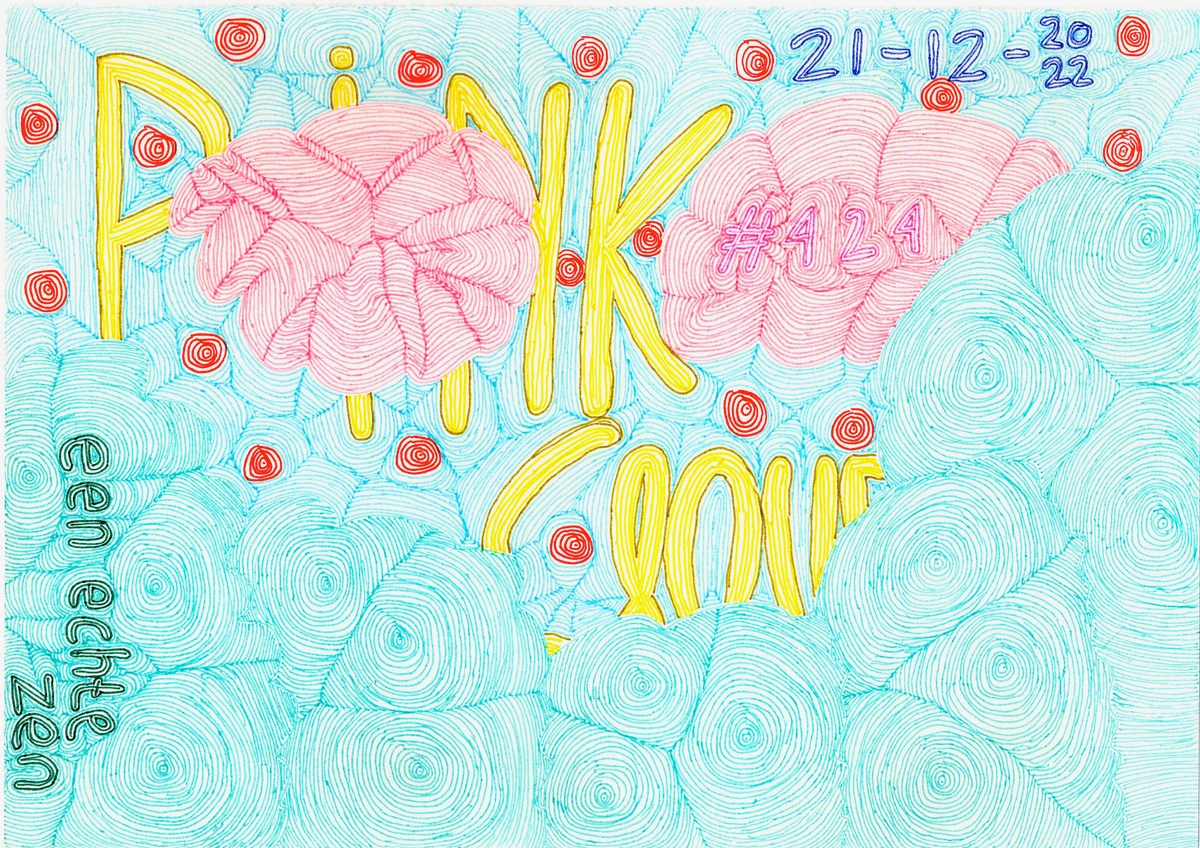
Historical and Cultural Importance: Tangible Links to Our Past
Bronze sculptures often serve as invaluable, tangible links to the past, acting as enduring reflections of the social, political, religious, and cultural contexts in which they were created. Ancient bronzes, for instance, like those from the classical world or the Shang Dynasty of China, offer unparalleled insights into lost civilizations, their beliefs, rituals, daily lives, and technological prowess. Even contemporary bronzes contribute significantly to our ongoing cultural narrative, marking our times and ideas. Any damage, neglect, or inappropriate restoration can irrevocably compromise these vital historical narratives, diminishing the sculpture's ability to tell its story accurately and powerfully to future generations. To damage a bronze is, in a very real sense, to erase a piece of history.
Market Value and Investment: A Financial and Aesthetic Asset
For many collectors, a bronze sculpture is not only a source of aesthetic pleasure but also a significant financial asset and a considered investment. Its market value is dynamically influenced by several critical factors: its rarity (is it a unique piece, a limited edition, or a reproduction?), its overall condition (including the integrity of its patina), its provenance (the complete, documented ownership history, which is vital for authenticity and value), the artist's reputation and market demand, and broader current art market trends.
Crucially, a well-maintained sculpture with a stable, original, and respected patina will almost invariably command a significantly higher value than one that has suffered from neglect, improper repairs, or aggressive, damaging cleaning. Think of it as an investment that requires diligent, informed portfolio management – in this case, artistic stewardship and careful physical preservation directly impact its financial return. Maintaining thorough documentation, as we discussed earlier (comprehensive records, professional appraisals, high-resolution photography), is also absolutely crucial for validating authenticity and value during appraisals, insurance claims, or potential sales. In the art world, condition and provenance are king, and diligent care upholds both.
Conclusion: A Lasting Legacy
Caring for a bronze sculpture, I've come to realize, is more than a chore; it's a privilege. It’s a dialogue across centuries, a quiet commitment to preserving beauty, history, and artistic intent. Each gentle dusting, each careful waxing, is a small act of devotion that contributes to a much larger story – the enduring legacy of bronze itself.
My hope is that this guide empowers you, not just with practical steps, but with a deeper understanding and appreciation for these magnificent objects. Remember, patience, respect for the patina, and a watchful eye are your most valuable tools. By embracing these principles, you ensure that your bronze masterpieces continue to inspire, provoke, and tell their thousand stories for generations to come, long after we, their temporary custodians, have passed into history. It’s a beautiful thought, isn’t it?
Aspect | Key Contribution to Value | Importance for Custodianship |
|---|---|---|
| Artistic Significance | Embodies artist's vision, skill, and creative period. | Preserving original condition, especially patina, maintains integrity. |
| Historical/Cultural | Tangible link to past civilizations, beliefs, and narratives. | Prevents loss of historical context through damage or inappropriate repair. |
| Market Value | Rarity, condition, provenance, artist's reputation, trends. | Diligent maintenance and thorough documentation maximize investment. |
The Protective Shield: Waxing and Other Coatings
After the meticulous process of cleaning and ensuring the health of your bronze, the next critical step is to apply a protective barrier. Think of this as the final flourish, the invisible shield that guards the patina and slows the relentless march of time and environmental wear. Neglecting this step is akin to leaving your house door open in a storm.
### The Art of Waxing: A Vital Layer
Waxing is arguably the most common and effective protective treatment for bronze sculptures, both indoors and out. It creates a breathable, sacrificial layer that repels water, offers some UV protection, and helps to stabilize the patina by slowing down oxidation. But not just any wax will do. I lean heavily towards museum-grade microcrystalline waxes (like Renaissance Wax) because they are stable, reversible, and won't discolour over time. Paraffin wax, for instance, can yellow and become brittle. But let’s be more specific about the
Applying the Wax:
- Ensure a Clean, Dry Surface: This is non-negotiable. Any dust, grime, or moisture trapped under the wax will cause problems. Refer back to our cleaning guide!
- Apply Sparingly: Using a soft, clean cloth or a small, natural-bristle brush (for intricate areas), apply a very thin, even coat of wax. Work in small sections, rubbing the wax into the surface. Less is definitely more here. You don't want a thick, gloppy layer.
- Allow to Cure: Let the wax sit for a short period – typically 15-30 minutes, or as directed by the product – allowing it to haze slightly. This curing time allows the solvents to evaporate and the wax to bond.
- Buff Gently: With a separate, clean, soft cloth (a shoe brush can work wonders for texture), gently buff the surface to a soft sheen. This brings out the depth of the patina and removes any excess wax. You’re aiming for a subtle lustre, not a high gloss.
Reapplication Frequency:
- Indoor Sculptures: Typically once every 1-3 years, depending on the environment and how much they are handled.
- Outdoor Sculptures: This is where diligence pays off. Reapply wax every 6-12 months, or more frequently in harsh climates, high pollution areas, or if you notice the water repellency diminishing. It's a bit of a commitment, but the longevity of your sculpture depends on it.
Lacquering: A More Permanent Solution?
While waxing is the conservator's preferred method for most bronze, lacquering offers a more permanent, albeit less reversible, protective layer. Lacquers are essentially clear acrylic or cellulose nitrate coatings that seal the bronze entirely from the environment. They are typically applied to newly cast bronzes with an artificial patina, or in situations where a completely stable, consistent finish is desired without the need for regular re-waxing.
Pros: Excellent long-term protection, minimal maintenance once applied. Cons: Not easily reversible, can yellow over time, difficult for non-professionals to apply evenly, and if compromised (e.g., scratched), moisture can get trapped underneath, causing widespread corrosion. I generally advise against DIY lacquering and reserve it for professional application in specific, controlled circumstances. It's a serious commitment and, in my experience, waxing provides sufficient and safer protection for the vast majority of bronze owners.
Now, let's get down to the brass (or rather, bronze) tacks. Caring for your sculptures depends heavily on whether they live indoors or brave the elements outdoors. The principles are similar, but the intensity and frequency differ significantly.
Indoor Sculptures: The Controlled Environment
For pieces that grace our interior spaces, our primary goal is to create a stable, predictable environment. While they escape the harsh realities of the outdoors, indoor bronzes are still susceptible to factors like fluctuating temperatures, humidity, and direct sunlight. Think of your home as a micro-climate you control. High humidity can encourage unwanted corrosion, while extreme dryness can cause any existing wax coatings to crack. Direct, intense sunlight? That's a slow fade for both patina and protective layers. My advice is always to place your indoor pieces away from direct heat sources, open windows, and strong, unfiltered light.
Daily Dusting and Gentle Cleaning (Indoor Sculptures)
For indoor pieces, the primary enemy is often dust. It settles, it collects, and given enough time, it can actually bond with the surface, making it harder to remove without risk. My routine is pretty simple, honestly, because I've found that consistency beats intensity any day:
- Soft Dusting: The Daily Ritual. A soft, clean cloth (microfiber is truly excellent for this) or a high-quality feather duster is your first line of defense. Gentle, consistent dusting—I aim for weekly, sometimes more if my cat has been particularly active near a piece—prevents the accumulation of particulate matter that can eventually bond with the patina. Think of it as a polite, almost meditative, check-in with your sculpture.
- Occasional Deeper Clean: When Life Happens. Every few months, or whenever I notice a bit of stubborn grime that dusting can't handle, a slightly damp cloth comes into play. Critically, use distilled water to avoid introducing mineral deposits from tap water, which can leave unsightly streaks. If absolutely necessary, a single, tiny drop of a very mild, pH-neutral soap (think uncolored, unscented dish soap, but diluted heavily) can be applied to the damp cloth. The key here is minimalism. Follow this immediately with a separate, clean cloth dampened with only distilled water to remove any trace of soap residue, then thoroughly dry the surface with another soft, clean, and completely dry cloth. Leaving moisture on bronze is an open invitation to new, unwanted chemical reactions.
Here’s a quick overview of what I keep on hand for indoor bronze care:

Item | Purpose | Notes |
|---|---|---|
| Soft Microfiber Cloths | Dusting & gentle wiping | Dedicate specific cloths for art care; avoid cross-contamination. |
| Feather Duster | Light dust removal | Excellent for intricate, delicate details, especially on textured surfaces. |
| Distilled Water | Cleaning agent & rinse (prevents mineral streaks) | Absolute essential for residue-free cleaning. |
| pH-Neutral Soap (unscented) | Occasional deep cleaning | Use extremely sparingly; always rinse thoroughly; check product safety for bronze. |
| Soft Bristle Brush (art-grade) | Detail cleaning (e.g., crevices, textured areas) | Use very gently, avoid scrubbing; synthetic bristles can also work. |
| Cotton Swabs | Precision cleaning for tight spots | Ideal for intricate details and gentle spot cleaning, change frequently. |
| Archival Cotton Gloves | Handling finished sculptures | Prevents transfer of oils and acids from skin, essential for all handling. |
| Small Soft Hairdryer | Thorough drying of intricate areas | Use on cool, low setting, held at a safe distance; crucial to prevent moisture trapping. |
| Hygrometer | Monitoring humidity levels | Essential for maintaining stable indoor environment, especially for sensitive pieces. |
Outdoor Bronze: Battling the Elements
Outdoor sculptures, bless their hardy hearts, truly brave the world. They're constantly exposed to a relentless barrage of environmental assaults: acid rain, industrial and urban pollution (which can create corrosive deposits), direct UV radiation from the sun, the delightful gifts from passing birds, and, for those in colder climates, the relentless cycle of freezing and thawing. This constant exposure often leads to a more pronounced, dynamic, and sometimes uneven patina—a tapestry of changes. It's a beautiful thing, certainly, a testament to endurance, but it undeniably needs a more active, strategic management approach to prevent irreversible damage. To truly understand the full gamut of threats and how to mitigate them, I often find myself revisiting articles like protecting outdoor sculptures from weather. It’s an invaluable resource.
- Regular Cleaning: A Proactive Defense. Outdoor bronzes absolutely demand more frequent attention than their indoor counterparts. I aim for at least quarterly, but often increase the frequency to monthly or even bi-monthly if the sculpture is in a heavily trafficked urban area, under trees, or exposed to significant industrial fallout. This proactive cleaning isn't just for aesthetics; it's crucial for removing corrosive pollutants, organic debris, and bird droppings before they can inflict lasting damage on the patina.
- Protective Treatments: The Essential Barrier. For outdoor pieces, applying a robust, museum-grade wax coating is not optional; it's an essential sacrificial layer. It acts as a physical barrier, shielding the delicate patina from moisture, harmful atmospheric gases, and even UV radiation. Think of it as specialized sunblock and rain gear for your art. We delve into the specifics of waxing and other protective coatings in detail in the section The Protective Shield: Waxing and Other Coatings.

Mastering the Art of Cleaning Bronze: A Hands-On Guide
Alright, with our foundational understanding of bronze and its environment in place, let's roll up our sleeves and get into the actual motions of cleaning. Remember, patience, a light touch, and genuine respect for the material are paramount. We're not scrubbing kitchen counters here; we're tending to art, engaging in a delicate dance with history.
The Golden Rule: Always Test First
Before applying any cleaning solution, even distilled water and pH-neutral soap, always perform a patch test in an inconspicuous area. This could be on the underside of the base, in a deep crevice, or somewhere that won't be easily seen. Apply your chosen method gently and observe for any adverse reactions, discoloration, or changes to the patina. This simple step can prevent widespread damage and give you confidence in your approach.
Step-by-Step Cleaning
Alright, let's get into the actual motions of cleaning. Remember, patience and gentleness are key. We're not scrubbing kitchen counters here; we're tending to art.
Step-by-Step Cleaning (General)
- Assess the Situation & Initial Dusting: Before any liquid touches your bronze, perform a thorough visual inspection. Look closely at the patina: is it even? Are there any odd spots, green powdery areas (a tell-tale sign of active bronze disease, or "bronze cancer," which requires immediate, professional attention)? Note any areas of heavy dust, cobwebs, or organic debris. Your very first physical step should be a gentle dry dusting with a soft microfiber cloth or a feather duster. This removes loose particles that could become abrasive if wet. Take your time; this isn't a race.
- Gentle Washing: For a general clean, dampen a clean microfiber cloth with distilled water. I cannot stress the "distilled" part enough – tap water contains minerals that can leave unsightly white deposits and accelerate corrosion due to its impurities. Gently wipe down the entire surface, working in small, manageable sections. For outdoor pieces that are quite dirty, a very gentle spray with a garden hose (low pressure, mist setting, never a jet!) followed by immediate wiping can be effective for an initial rinse, but always follow with a final wipe down using a cloth dampened with distilled water for a truly clean finish. If the sculpture is particularly grimy, and only if absolutely necessary, you can add a single drop of a very mild, pH-neutral, unscented soap (look for a museum-grade cleaner or a very gentle dish soap diluted at 1:100 with distilled water) to a bucket of distilled water. Lather slightly, and apply the suds on your cloth, never directly onto the bronze.
- Targeted Cleaning for Stubborn Grime: For those tricky crevices, intricate details, or more stubborn, localized dirt, this is where your soft-bristle art brush (natural bristles are best) or cotton swabs come in handy. Dampen them with distilled water (or the very dilute soap solution) and work very carefully. The motion should be more like a gentle dabbing or lifting, rather than aggressive scrubbing. Avoid any abrasive motion or pressure that could scratch or alter the patina. Bird droppings, in particular, need prompt and gentle removal; allow them to soften with a damp cotton swab or a small piece of distilled-water-soaked cotton for a few minutes before gently wiping away. Never scrape!
- Rinsing and Thorough Drying: This step is absolutely crucial and cannot be rushed. After any washing or targeted cleaning with soap, you must thoroughly rinse the sculpture with multiple applications of clean distilled water (using a fresh, distilled-water-dampened cloth) to remove all soap residue. Even a tiny, invisible film can attract more dirt, cause discoloration, or accelerate corrosion over time. Immediately after rinsing, use a separate, clean, dry microfiber cloth to thoroughly dry the entire surface. Pay special attention to crevices, undercuts, and any textured areas where water can pool. Leaving any moisture, even tiny droplets, can promote unwanted corrosion and spotting. For intricate areas, I sometimes use a soft hairdryer on a cool, low setting, held at a safe distance, just to be absolutely certain it's bone dry before proceeding to waxing.
